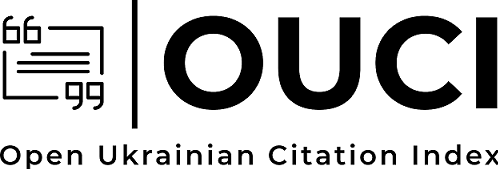The Creation of Arresting Departments at the Maritime Authority in Kherson Governance
DOI:
https://doi.org/10.28925/2524-0757.2023.25Keywords:
prisoners, arresting departments, Black Sea Fleet, Mykolaiv, AdmiraltyAbstract
The article examines the process of formation of arresting departments at the Maritime Authority in Mykolaiv. The reasons underlying the creation of maritime arresting departments and the difficulties that arose during their formation are analysed. In particular, it is found that the main reason was the need for cheap labor for the active development of Mykolaiv and the strengthening of the Black Sea Fleet. Sources of equipment and replenishment of the arresting companies, as well as their location and role in the process of Mykolaiv urbanization and the development of the Black Sea Fleet are studied. The detainees were mostly convicted military men who were transferred from other places of imprisonment to ensure the construction of important facilities of the city and the navy. A large part of the detainees was filled with beggars. The use of their work contributed to the development of the infrastructure of Mykolaiv as an important seaport. The management system of detention centers and their internal structure are also investigated. The detainees were at a low level of the social hierarchy, their rights were limited, and their activities were subject to strict military control. It is concluded that the arresting companies were founded in order to build the infrastructure of Mykolaiv, to meet the needs of the Black Sea Fleet and, in general, to militarize forced labor in the empire in the first half of the 19th century.
Downloads
References
Aslanbegov, A. (1873). Admiral Samuil Alekseievich Greig. Saint Petersburg [in Russian].
Denisov, A. (1887). Heneral-adiutant, admiral Nikolai Andreievich Arkas. Sevastopol [in Russian].
Gavrilov, I., & Oranskii, D. (2011). Istoriia Sviato-Alekseevskoi (Ostrozhnoi) tserkvi. Nykolaievskii Bazar [in Russian]. http://bazar.nikolaev.ua/print/515
Honcharuk, T. (2010). Pro vykorystannia pratsi areshtantiv na budivnytstvi Bulvarnykh (Potomkinskykh) skhodiv 1837 — 1842 rr. Chornomorska mynuvshyna, 5, 138–143 [in Ukrainian]
Hrushevskyi, M. Zhytiie Oleksiia, cholovika bozhoho. In M. Hrushevskyi, Tvory u 50-y tomakh (Vol 13, pp. 361–366) [in Ukrainian].
Gubar, O. (2010). “Entsyklopedyia zabytykh odessitov” Dragutinskaia komanda. Odesskii almanakh “Deribasovskaia — Rishelievskaia”, 43, 55–61 [in Russian].
Konstantinova, V. (2004). Urbanizatsiini protsesy na pivdni Ukrainy v ostannii chverti ХVIII — seredyni ХIХ st. Literatura ta kultura Polissia, 27, 48–52 [in Ukrainian]
Korotkyi, O. (2021). Areshtantski roty na pivdni Ukrainy ta imperska kolonizatsiia druhoi chverti XIX st. Naukovyi visnyk Izmailskoho derzhavnoho humanitarnoho universytetu, 52, 72–84 [in Ukrainian].
Kravchuk, P. (2014). Mistsia uviaznennia u Pivdennii Ukraini yak skladova derzhavnoho hospodarstva: ostannia chvert XVIII — persha polovyna ХІХ stolittia. Muzeinyi visnyk, 14, 142–161 [in Ukrainian].
Kriuchkov, Yu. (1997). Istoriia ulits Nykolaieva (toponimicheskii putevoditel po gorodu i okrestnostiam). Nikolaev [in Russian].
Kriuchkov, Yu. (2008). Oleksii Samiilovych Hreih i yoho chas. Mykolaiv [in Ukrainian].
Lahoshniak, O. (2014). Vid Staroi perepravy do Varvarivskoho mostu. Mykolaiv [in Ukrainian].
Levchenko, L. (2006). Istoriia Mykolaivskoho i Sevastopolskoho viiskovoho hubernatorstva: 1805-1900. Mykolaiv [in Ukrainian].
Yanevich-Yanevskii, K. (1881). Istoricheskii obzor uchrezhdeniia i uprazdneniia arestantskikh rot Morskogo vedomstva. Morskoi sbornik, 186, 231–244 [in Russian].
Veselago, F. (1872). Spisok russkikh voiennykh sudov s 1668 po 1860. Saint Petersburg [in Russian].
Published
How to Cite
Issue
Section
License
Copyright (c) 2023 Олексій Короткий

This work is licensed under a Creative Commons Attribution-NonCommercial-ShareAlike 4.0 International License.
Authors who publish in this journal retain the right of authorship of the work and give to the journal right of first publication of this work under the conditions of Creative Commons: Attribution-NonCommercial-ShareAlike 4.0 International (CC BY-NC-SA 4.0), which allows others freely distribute the work published with reference to the authors of the original work and the first publication of this magazine.














